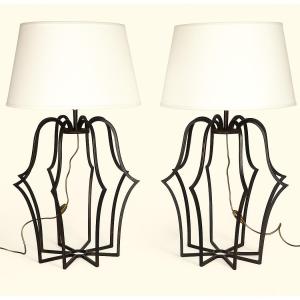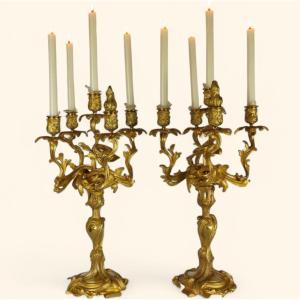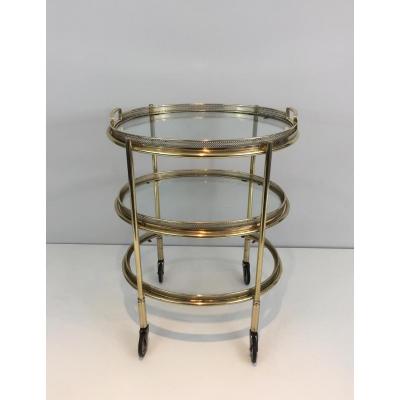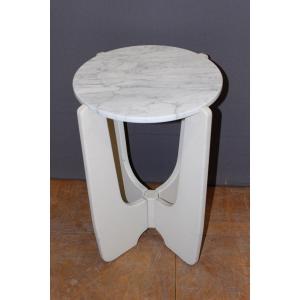Beautiful period patina. Some marks on the gilding and on the corners corresponding to the age of the table, created in the 1960s.
Height: 40 cm.
Width: 60 cm.
Length: 109 cm.
Maison Ramsay is a 20th-century furniture and decoration publishing house, specializing in the edition of pieces in lacquer and gilded wrought iron, and sometimes in marble and stone. It reached its peak between the 1950s and 1970s, with a boutique located at 34 rue du Faubourg Saint-Honoré, right next to the historic Maison Hermès boutique. Maison Ramsay collaborated with many designers, including Robert Thibier, Henri Pouenat and Gilbert Poillerat, and also produced furniture for Maison Hermès, as well as some of the historic furniture for the Cartier boutique.
Some of its editions – metalwork pieces made mainly by the Pouenat workshops – were also distributed by Maison Jansen and pieces joined Maison Blanche in the 1960s. In most of its creations, the metal was forged, which gives it a surprising “aged” appearance that neutralizes the gilding and immediately confers a “luxurious and assertive” character.
Her style, inspired by neoclassicism, is well illustrated in the wall sconces and coffee table bases she produced: a modernist and "zen" interpretation of classic designs, with great simplicity of style and a desire to remain family heirlooms.
Henri Pouenat, born in 1934, entered the Ecole Nationale Supérieure des Arts Décoratifs in Paris in 1953. There he was one of Gilbert Poillerat's students. With his father, he created seats and tables for the first-class apartments of the ocean liner France, stair railings and lighting fixtures for palaces in Tehran and Jeddah. He also developed his own catalog, lighting & furniture, and became one of the designers of Maison Ramsay.
The Ateliers Pouenat, which manufactured a large part of the furniture sold by Maison Ramsay, have a fascinating history of metalwork in France. Founded in Moulins, Allier, in 1880, the company was a collection of workshops producing ornamental ironwork for architectural projects. From Paris to London, from Tehran to Moscow, listed buildings, luxury hotels, and private residences are still adorned today with railings, gates, screens, and lanterns designed, made, or restored in these Bourbonnais workshops.

































 Le Magazine de PROANTIC
Le Magazine de PROANTIC TRÉSORS Magazine
TRÉSORS Magazine Rivista Artiquariato
Rivista Artiquariato